Anne-Louis Girodet de Roucy, a.k.a. Girodet-Trioson or Girodet
Pronunciation:

Anne-Louis Girodet de Roucy was born in Montargis on January 5, 1767. At the age of eighteen, already fatherless, he joined Jacques-Louis David's studio in Paris, proving to be one of his most talented pupils. Following his mother's death in 1787, he came under the protection of family friend Dr. Trioson (who adopted him in 1809).
Winner of the Prix de Rome on his third attempt, in 1789, with Joseph recognized by his brothers, he returned to the Eternal City, escaping the most bloody hours of the Revolution. Here, he painted two of his most famous works: Hippocrate refusing the gifts of Artaxerxes and Le Sommeil d'Endymion, in which we can detect the beginnings of Romanticism.
Girodet returned to Paris in 1795. Here, he painted the portrait of Jean-Baptiste Belley in 1797, Mademoiselle Lange en Danaé in 1799, L'Apothéose des Héros français morts pour la patrie pendant la guerre de la Liberté (which depicts the bard Ossian welcoming to paradise the generals Louis Desaix, Jean-Baptiste Kléber, François Séverin Marceau, Lazare Hoche and Jean-Étienne Championnet) in 1802, a portrait of Napoléon Bonaparte, First Consul, and the Leçon de géographie in 1803.
His career peaked under the Empire, with the Scène de déluge in 1806 (which won him the Prix de la Décennie in 1810, the painting being preferred to his master David's Sabines), a portrait of Queen Hortense, Les Funérailles d'Atala in 1808, the portrait of Chateaubriand meditating on the ruins of Rome in 1809, The Revolt in Cairo in 1810 (where he competes with Gros to depict a scene of violent action bathed in extravagant orientalism), and Napoleon receiving the keys to the city of Vienna.
In 1812, an inheritance enabled him to devote himself to writing poems, a fabric of clichés that added nothing to his glory and did not go down in history.
Together with François Gérard, he created the decorations for Malmaison, and from 1813 onwards, participated in the decoration of the Château de Compiègne, painting several murals.
Girodet's strength declined under the Restoration, and the quality of his last works, such as Tête de Vierge and Pygmalion et Galatée, suffered. He died in Paris on December 9, 1824, and is buried in the Père-Lachaise cemetery (28th division) .
"Anne-Louis Girodet de Roucy-Trioson", self-portrait.
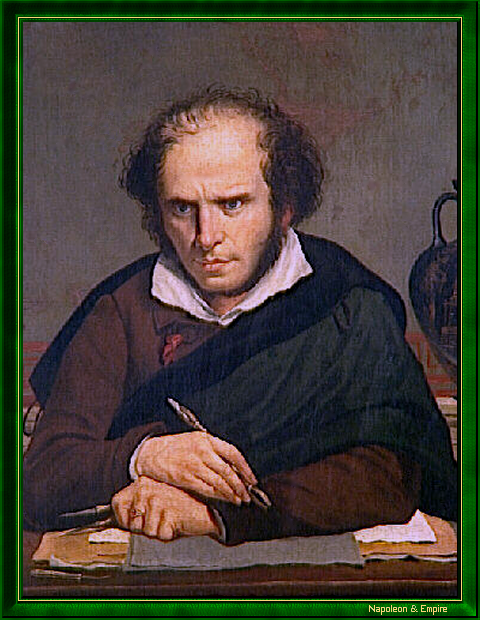
Girodet's work lies at the crossroads of two major artistic movements of the 19th century. His quest for ideal beauty according to classical canons places him in the tradition of Davidian neoclassical painters, while at the same time, through a strong desire for innovation, he imbues his paintings with a singular grace and poetry, in harmony with the zeitgeist of his time, which prefigured Romanticism.
Other portraits
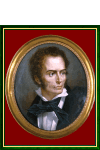
"Anne-Louis Girodet de Roucy-Trioson", self-portrait.
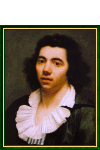
"Anne-Louis Girodet de Roucy-Trioson", self-portrait.
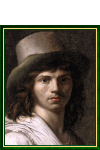
"Anne-Louis Girodet de Roucy-Trioson", self-portrait in 1795.
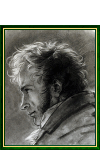
"Anne-Louis Girodet de Roucy-Trioson", self-portrait.
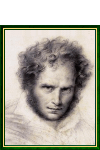
"Anne-Louis Girodet de Roucy-Trioson", self-portrait.
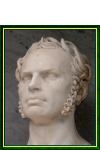
"Anne-Louis Girodet de Roucy-Trioson". Tombstone (detail) at Père-Lachaise cemetery, Paris.